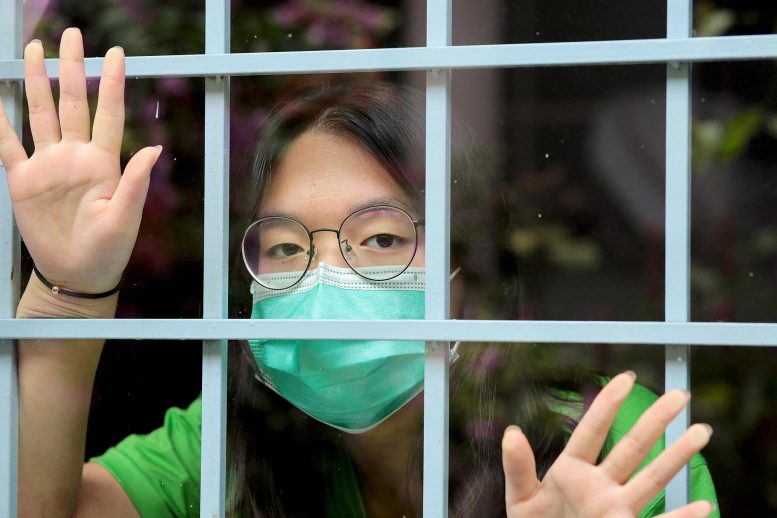
A recent study explores the dynamics of nonpharmaceutical interventions in pandemic management, revealing how minor changes can significantly affect the optimal strategy.
New research highlights the fine balance between health and economic strategies in pandemic response, introducing an innovative approach that adapts to changing virus dynamics.
The COVID-19 pandemic raised questions about when and to what extent costly nonpharmaceutical interventions (e.g., lockdowns) should be used to slow the contagious spread of the virus. In a new study, researchers tackled that question with a dynamic optimization model. They found that small changes can tip the optimal response between very different approaches and identified an alternate approach that has previously not been recognized as effective.
The study was conducted by researchers at Carnegie Mellon University, the International Institute for Applied Systems Analysis, the University of Vienna, Vienna University of Technology, Tilburg University, and the Vienna Academy of Sciences. It is published in Theoretical Population Biology.
Economic Versus Health Strategies
“Some interventions to slow disease spread are cheap, but others disrupt economic, educational, and social activity,” notes Jonathan P. Caulkins, professor of operations research and public policy at Carnegie Mellon’s Heinz College, who coauthored the study. “The latter force governments to balance the health benefits of reduced infection and death against broader lockdown-induced societal costs.”
Previous models exploring the optimal lockdown strategy for countering pandemics like COVID-19 found that policymakers often face a stark choice: It may be optimal to lock down very aggressively to more or less avoid the epidemic (a “health strategy”) or it may be optimal to use lockdowns more sparingly to delay but not avoid most people getting infected (an “economic strategy”). That work also found that small changes in certain key parameters can flip the optimal strategy from one extreme to the other.
Advancements in the SIR Model
Researchers have long observed that a population exposed to an infection can be divided into three categories: susceptible (S), infected (I), and recovered (R), creating an SIR model. Past research has examined how to adjust lockdown intensity as an epidemic evolves. In this study, researchers extended that work by augmenting the standard SIR model to include the possibilities that a) the protective effects of vaccines can ebb over time, 2) the virus can mutate in ways that render past immunity less effective, and 3) the resulting re-infections are less deadly than infections of people with no immunity.
Here, researchers referred to these three additional features as novelties, and investigated the effects of adding each successively to the basic SIR model. They then added another feature: an inflow of infections even when no one in the focus population was infected (e.g., infection from abroad). The study also considered duration and stock of immunity and lockdown intensity.
The Role of Nonpharmaceutical Interventions
More aggressive efforts to use nonpharmaceutical interventions such as lockdowns lead to fewer infections, but also to greater economic and social burdens. For example, China’s zero-COVID policy resulted in an extended and painful lockdown, and in many countries that closed schools, students’ educational progress was harmed.
A recurring theme in the analysis, say the researchers, is the existence of break-even or tipping points. If a parameter describing the infection or infection countermeasure is above that critical value, it would be best to follow one strategy, but if that parameter turned out to be below that critical value, it might lead to a very different strategy. Among those key parameters is the valuation society places on avoiding a COVID-19-induced death relative to the value placed on the economic, social, and educational harms caused by locking down important parts of society.
It is important to acknowledge this issue because parameters reflect individuals’ or society’s values; they are not a scientific fact that can be measured objectively. As a result, two people who agree on all the scientific facts can nonetheless reasonably and intelligently prefer different COVID control strategies.
Dynamic and Alternate Solutions
Another theme is the existence of alternate optimal solutions that reflect fundamentally different strategies. By augmenting the standard SIR model to include the features assessed in this study, researchers identified a third type of solution that uses periods of stricter and less strict lockdowns to accompany recurring epidemic waves.
While the existence of recurrent waves of epidemics and lockdowns might at first glance be considered evidence of policy failure, it can in fact be the best way to respond to the realities of a virus that mutates or otherwise defeats previously acquired immunity. The authors also note that policies that would have been optimal for COVID-19 might not be optimal for the next pandemic if the virus causing the next pandemic is a little more contagious or a little less deadly or a little less prone to mutate.
Conclusion: A Call for Compromise and Flexibility
“Whatever policy is pursued, its implementation should perhaps be tempered by the knowledge that it won’t be the preferred or right policy for every individual, and that evolving understanding of that new virus’s idiosyncratic properties might require even experts to change their mind,” says Dieter Grass, guest research scholar at the International Institute for Applied Systems Analysis and lead author of the study. “Choices about epidemic-related policies should be seen as an exercise in compromise for the collective good, not a matter of mechanically deducing the one, true, evidence-based policy that all rational people must favor.”
Reference: “Riding the waves from epidemic to endemic: Viral mutations, immunological change and policy responses” by D. Grass, S. Wrzaczek, J.P. Caulkins, G. Feichtinger, R.F. Hartl, P.M. Kort, M. Kuhn, A. Prskawetz, M. Sanchez-Romero and A. Seidl, 3 February 2024, Theoretical Population Biology.
DOI: 10.1016/j.tpb.2024.02.002









Be the first to comment on "New Study Challenges Conventional Wisdom on Lockdowns"